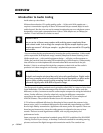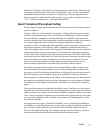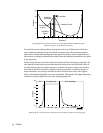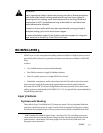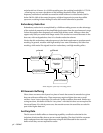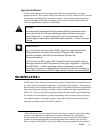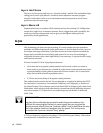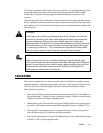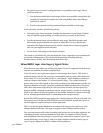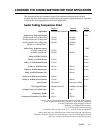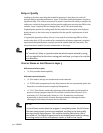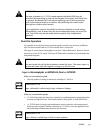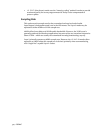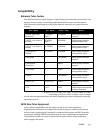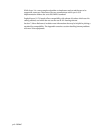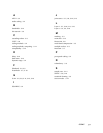5-10 CODING
• The goal is to get as much “coding headroom” as possible at each stage. This is
achieved when you:
1. Use the most possible bits at each stage, with the least possible compression (for
example, by lowering the sample rate, and using 64kbps rather than 56kbps
connection), and/or
2. Use the more powerful coding method of those available at each stage.
At the moment, we offer the following advice:
• Use coders only where necessary. Consider the alternatives at each stage. With the
cost of hard disk capacity falling, is it really necessary to crunch at that point?
• Use the maximum bitrate you can afford at each stage. Hard disk recorders and
other studio systems often have an option to adjust this. For very critical work,
remember that ZephyrExpress may be used in a mode where a mono program is
split over two digital network channels.
• Get the Layer 3 advantage on low bitrate channels.
The people at Fraunhofer IIS, who developed the Layer 3 algorithm, have introduced a
perceptual coding analyzer. This device has the potential of making objective
measurements a reality. We’ll be hearing more about this.
Mixed MPEG Layer 2 And Layer 3 Signal Chains
What about the case where you will be using Layers 2 and 3 in a signal chain? It turns out
that the two methods are nicely complimentary.
At low bit-rates, Layer 3 gets more signal-to-mask margin than Layer 2. This is why it
performs better in the low bit-rate tests. It accomplishes this by using a filter bank with
more bands, 576 vs 32. One effect of this is “time spread.” (More frequency resolution
requires a longer time window. It’s a law of physics thing...) For a small number of
passes (one or two), this is good, as the ear has masking in the time domain as well as the
frequency domain, and Layer 3 naturally exploits this additional dimension. The down-
side is that when many stages of Layer 3 are used at low bit-rates, the time spread can
become audible (softening of transients and pre-echoes, mostly), and this is a bad thing.
While Layer 2 does not have this problem, it has another. Because it is closer to the edge
for s/n, multiple generations result in unmasking (noise and grit, mostly).
But the ISO/MPEG people do not propose that a bunch of passes of Layer 3 be used. The
idea is that Layer 3 be used at ISDN/SW56 bit-rates for field pick-up and that Layer 2 be
used at higher bit-rates in other parts of the signal path.
This is why the ISO group decided to recommend the Layers as they did: Layer 3 for
64kbps/channel and Layer 2 for equal to or greater than 128kbps/mono channel.
Our own experiments with codec cascading confirm that this is the right approach: the
two coding methods seem to complement each other. Two passes of Layer 3 sound
noticeably better than two of Layer 2; a pass of Layer 3 followed by a pass of Layer 2 also
sounds better than two of Layer 2. And we’ve had customers who have used a pass, or
two, of Layer 3 followed by SEDAT without evident problems.



